Meet the Genius Who Brought the Disco Ball to Lincoln Center
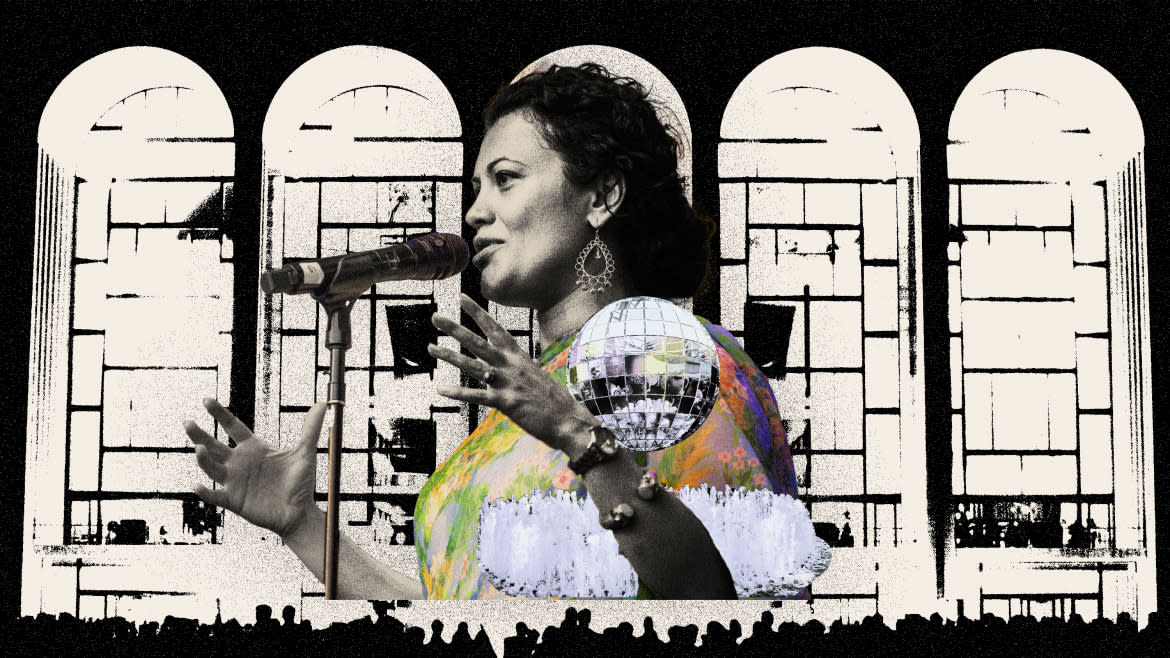
If she accomplishes nothing else in her current job, Shanta Thake will forever be the woman who hung the disco ball in the middle of Lincoln Center. Ten feet in diameter, it sits low above the fountain in front of the Metropolitan Opera House, dominating an outdoor plaza, now dubbed “The Oasis,” that is outfitted like an open-air dance club. In the daytime, that ball casts calming blue reflections for passersby. Come evening, it glitters above bodies in motion to the rhythms of live bands.
“The return of social dance has been the most magical aspect of our return to performances,” Thake says. In September, she began work as chief artistic officer, overseeing productions by Lincoln Center for the Performing Arts (aside from the seasons of its constituents, which include the Metropolitan Opera, New York Philharmonic, and New York City Ballet). “It’s my job to make the case for live performance,” she says, and to have the nation’s largest performing arts complex “be of service to New York City, providing the best to the most.”
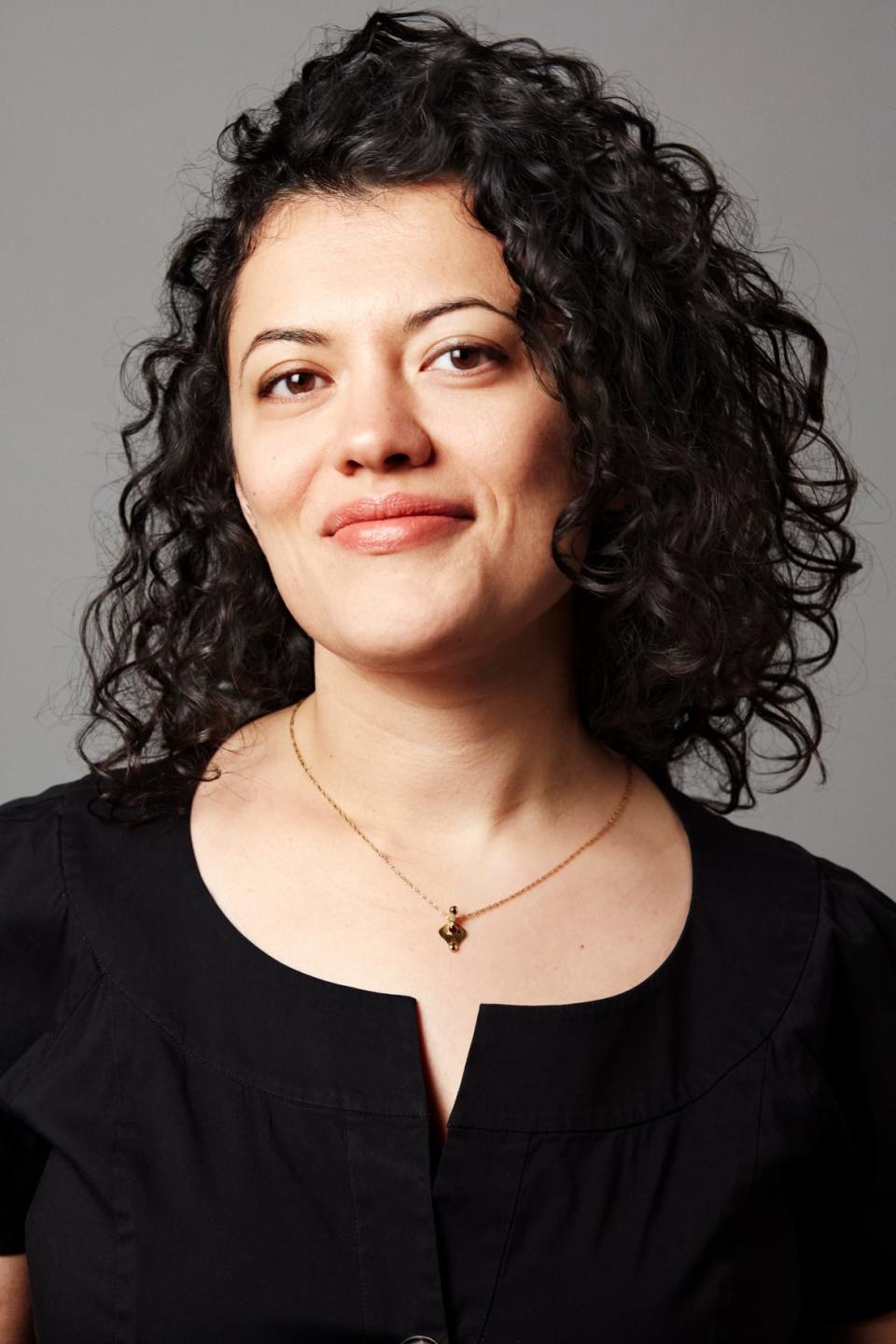
Thake, 42—whose mother was born and raised in Malaysia, of Indian descent, and whose father is American-born, of German descent—grew up in Wisconsin and Indiana. Once in New York City, she spent nearly two decades at The Public Theater, often working on innovative, cross-disciplinary projects and, for a decade, managing the cabaret-style venue Joe’s Pub. She arrived at Lincoln Center at a moment of reckoning for all arts organizations regarding issues of race and equity, not to mention a period when the pandemic had brought the programs and economies of most cultural centers to a near-halt.
Wynton Marsalis Celebrates 25 Years of Jazz at Lincoln Center
Her larger goal, she says, is “expansive reach”—inviting new audiences and telling untold stories. (One of these, which will inaugurate a refurbished David Geffen Hall on October 8 as co-presented with the New York Philharmonic, is “San Juan Hill,” for which trumpeter-composer Etienne Charles blends influences including ragtime, swing, and the calypso of his native Trinidad to honor the Black and Caribbean neighborhoods displaced by the creation of Lincoln Center.)
Thake’s immediate task is reactivating the center for virus-wary and generally weary crowds. “How can we come together again?” she asks. One answer is ritual. On a sweltering, late-June afternoon, artist Amanda Phingbodhipakkiya led two-dozen people in the process of writing wishes on ribbons, and then tying them to the London Plane trees in a grove next to a reflecting pool, within “Gather,” a series of participatory installations at Lincoln Center. One of those ribbons said, “In the future, we will all stop comparing our hurts. It will be a beautiful thing to behold.”
And on a sunny Sunday earlier this month, a few hundred couples assembled for “Celebrate: A (Re) Wedding.” One couple was finally having the wedding that COVID denied them due to quarantines. Another couple just wanted to renew vows, teenage kids in tow. The event was presided over by one mayor, three religious leaders, and actress-comedian-singer Lea DeLaria.
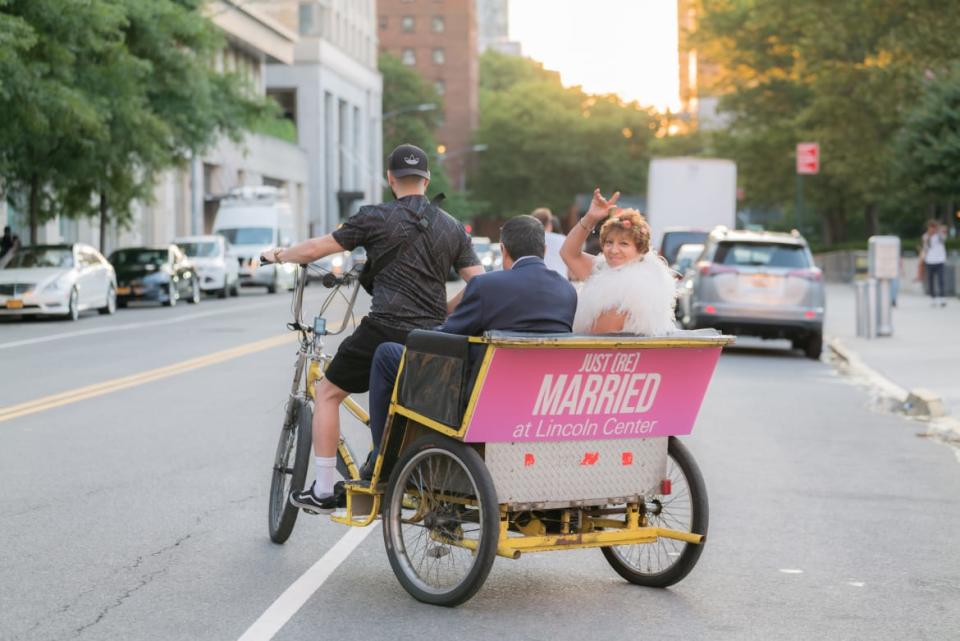
I talked to Thake about her path to her new position, and just what she and Lincoln Center propose for their ongoing relationship with New York City.
Growing up in the Midwest, what was your consciousness of Lincoln Center?
I started visiting New York City when I was around 10. My aunt had moved here. I began to understand that New York was this miraculous place that I needed to be in as often as possible. But Lincoln Center was a distant presence, something that I loved and could appreciate but that I also didn't have any personal investment in.
Later on, you arrived in New York City as an actress, right?
I came here as an aspiring actress.
But in less than two weeks, you landed an office job at the Public Theater.
Yes. This was right after 9/11. I was working for [former Public Theater Artistic Director] George C. Wolfe. He was doing a series of incredible works at the time. Top Dog/Underdog was going to Broadway. Elaine Stritch’s show was at the West End. We were building Radiant Baby, a musical about Keith Haring. I stayed for 19 years.
You quickly gravitated to Joe’s Pub, an important showcase and laboratory for a wide range of artists. How did that experience affect you?
I started at Joe’s Pub six months after I started at working at The Public. I realized early on that I was not going to be an artist myself, and that I was much more capable and fed by being on the other side, being part of the team supporting artists, not being on stage. I don’t know if I would’ve realized that if I hadn’t been in such a fulfilling environment. It was the most magical place. It made me think: I’m not leaving this place to go sit in line in an audition. What’s happening here is much more important.
Did that work change how you thought of a presenter's role?
It taught me that there are multiple vantage points. The idea that one person has the knowledge base to decide all of the things for all of the people is an absurdity, especially in New York. And it taught me that an artist is always at the center of their community. If you can figure out how to make a space welcoming to an artist, they will make that a home and in turn welcome people into the space. Our job is mainly to get out of the way of that, and then to let the artists do whatever the hell they want.
Right now, there seems some backlash against critics and curators, or gatekeepers of any kind. If a single arbiter is absurd, what does that mean for a chief artistic officer of Lincoln Center?
Well, I do believe in hierarchy as a structure. I think there needs to be somebody, or a few people, who are responsible, who are able to pull it together, whether that’s responsible for listening to the artist community or, in our case, the constituents of Lincoln Center and all of these other incredible arts organizations around us. Here at Lincoln Center, I have a team of curators and incredible people at the top of their fields who have also been invested in artists for decades. It’s up to me to match their ideas with what I hear both from the worlds outside and inside this organization. What criticism and curation do so well is connect us: Here is history of this work and related works, here are the artists that have done this before. I think being able to reference that larger ecosystem is a critical part of presenting performing arts. We are not doing a new thing here. But we are doing it in a new way, and we are directing resources in a new way.
Has the pandemic changed the context for all of that?
Of course. It’s been amazing to watch audiences come and rediscover Lincoln Center. I would say the return of social dance has been magical. To have people coming back, people that haven’t been to Lincoln Center in three summers, is an incredible feeling.
Where did you get the idea for that big wedding?
I thought: Now that people can finally come back together again, what haven’t they been able to do? They haven’t been able to grieve. They haven’t been able to celebrate. They haven’t been able to have the wedding they wanted. I just felt like we should have a wedding. What would it look like to try to throw a wedding for as many people as possible? We opened registration on Loving Day. By July, we had nearly 500 couples and 100 flower children signed up. We wanted it to feel like a ceremony, like you really got married at Lincoln Center—to have an emotional arc, but also to be arts-focused and not based in one specific tradition. And then to tell this story of not just being in partnership with somebody, but also being in partnership with the city. Let’s celebrate your union and tell a larger story of unity.
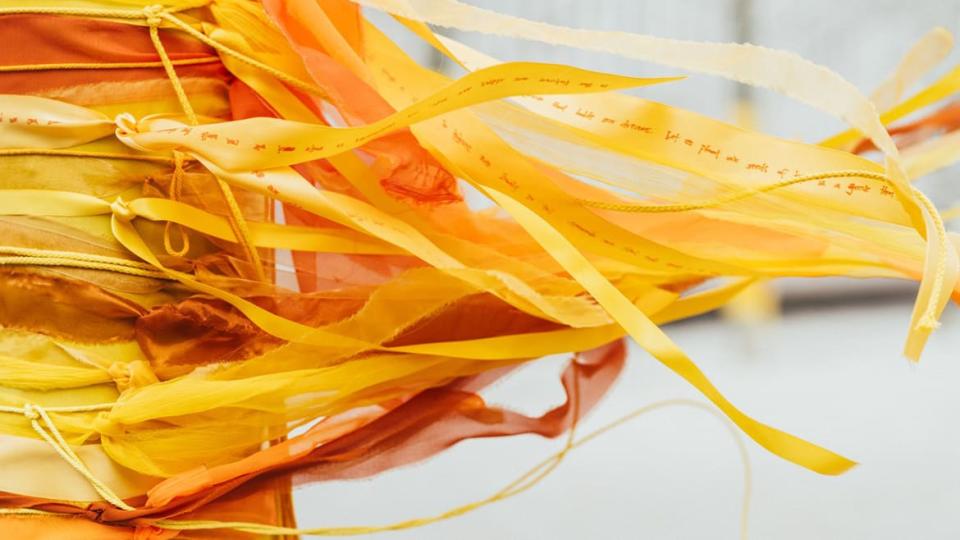
Are rituals at the core of your summer programming?
I suppose so. I feel like people have lost their rituals. We had one called “Seeds of Hope,” which was an idea of Amanda Phingbodhipakkiya’s. She talked about her childhood: When someone in her family would get frustrated or encounter injustice, they would write their hopes on ribbons and tie them around the tree in the backyard. She turned it into this epic-scale ritual for us. You walk through and see everybody’s hopes for the future, tied around these beautiful trees in the grove. She’s got another one called “Threads of Joy,” where people wrote what brings them joy on cards that she attached to this giant sculpture that she’s created out there, with bells attached. When the wind blows, there’s this beautiful sound and if you follow it, you see what makes everybody joyful.
There’s one ritual we do before every single show. For people like you and me, this may be our 300th show since COVID. But I guarantee you that there are plenty of people in every audience that you’re in for whom this is their first show back. Every time I go to a show, I feel uncomfortable that nobody acknowledges that—that there’s not this sense of: Welcome Back. So, before every show, the curator or me or someone goes onstage and leads the audience through a call-and-response recitation of something that Mahogany Browne [Lincoln Center’s first-ever poet-in-residence] wrote, along the themes of “remember, rejoice and reclaim.” Our hope is that it reflects the fact that we have all been through a really hard time, and we just want to hear from you.
Are you trying to restore a more functional aspect to the arts you’re presenting?
It depends on what you mean by functional. I think it’s my job to make the case for live performance, especially for people who have felt outside of live performance venues for their whole life. Or for people that may have lost the thread of why live performance matters during a pandemic. To make them feel not just welcome, but at home. I believe that the arts shouldn’t be this faraway thing, but actually part of your everyday life. The goal is to have Lincoln Center be of service to New York City and to provide the best to the most. How do we do that? It starts from programming. It starts from an artist feeling at home here and extending that welcome in a way that feels genuine, and with us making sure that relationship stays strong.
Is there a structural idea to have programs that look and represent differently than in the past?
I would say, structurally, the role of the organization I work for is to bring in new forms, new artists that are not otherwise represented. And if we can bring those artists into the fold of some of our constituent organizations, even better.
We’ve always had programming that spoke to these audiences, from the inception of Lincoln Center. Now the resources move a little differently. Our focus is much more on free programs, much more outdoors and centered on a lot of different voices—making sure that there’s not just one show for a Black audience but rather multiple ones in all of our spaces, and same thing with the Dominican audience, same thing with the Puerto Rican audience, same thing with all of the communities that make up our city.
This works on a variety of levels. The “American Songbook” series was always about expanding the canon. This year, it was also about expanding what it means to call something American. How do you take this variety of immigrant voices—non-English-speaking voices—and put them center stage? I believe that live performance has a singular role in bringing people together to have these conversations, because otherwise we’re not coming together for conversations. It is powerful to experience the same thing together. And I think live performance can desegregate.
Well, it can desegregate or segregate. Is desegregation part of your curatorial role?
I feel like it is the role. To be able to bring a diversity of people together and say: What happens onstage really matters.
Is such democratization at odds with the notion some have of Lincoln Center as a temple of high culture?
I don’t think so. I don’t see it that way. Artists don’t see it that way, in my experience. And if audiences do, it’s because they are so used to having things curated directly for them. In a city like New York, to be in a mixed audience is one of the greatest gifts.
When you stepped into your job, did you encounter resistance based on biases of race, ethnicity, or gender, or because you didn’t come from a classical-music background?
Yeah, I’m sure. I try not to take any of that personally. I only have what I have. But I’m going to bring my best to this job. I feel very fortunate stepping into the role established by [former artistic director] Jane Moss. There’s already been female leadership here for a long time. I think very few arts organizations of this size have that as a legacy. And I come from the school of George C. Wolfe. I sat at his feet and saw how intentional that arts organization was at every corner, what that meant. And it meant that the press person was having the same conversation as the artistic director, as the head of development, around what it means to reflect the city. I feel that here.
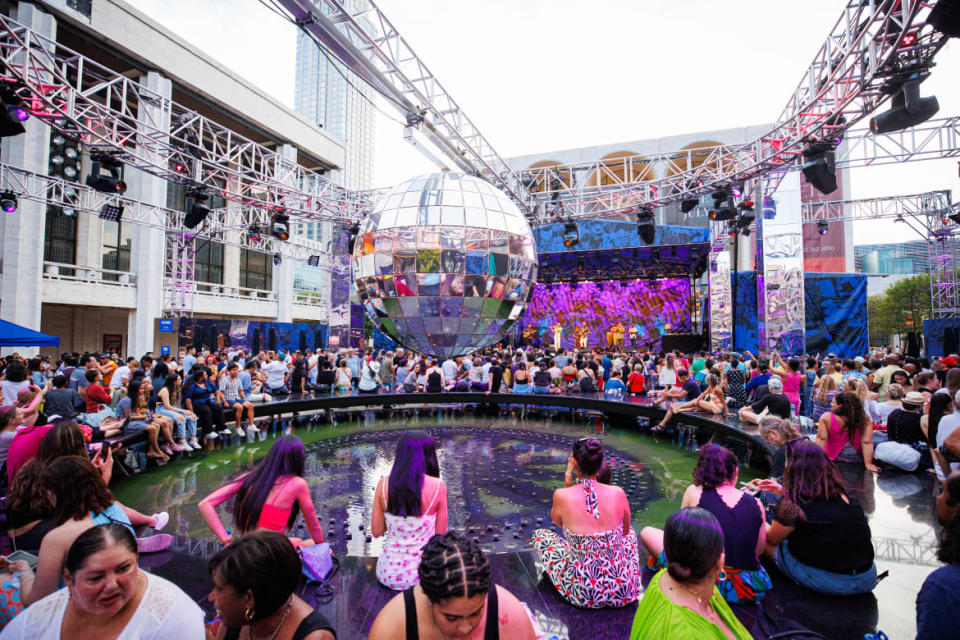
What inspired that disco ball?
I still can’t believe they let us get away with that. It’s a 10-foot disco ball hanging over the fountain. It feels really young and fun and colorful and has a real energy to it. Clint Ramos is the first designer that came to mind when I wanted to reimagine this space. He is an incredible costume designer and scenic designer. I knew he could transform this space. I knew I wanted it to be joyful. I knew it needed to sort of hold this idea of not forgetting what we’ve been through, and that it needed to accommodate social dance. That dance floor was a critical part of it.
Is the disco ball a metaphor for the kind of transformation you hope happens?
It’s more than a metaphor. It’s happening. You can actually feel it happening.
Get the Daily Beast's biggest scoops and scandals delivered right to your inbox. Sign up now.
Stay informed and gain unlimited access to the Daily Beast's unmatched reporting. Subscribe now.


